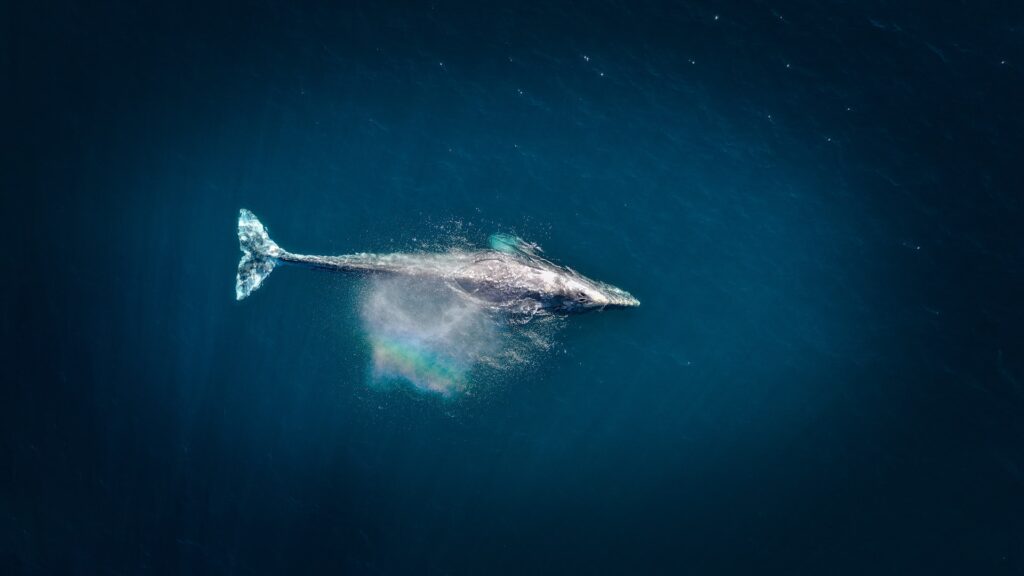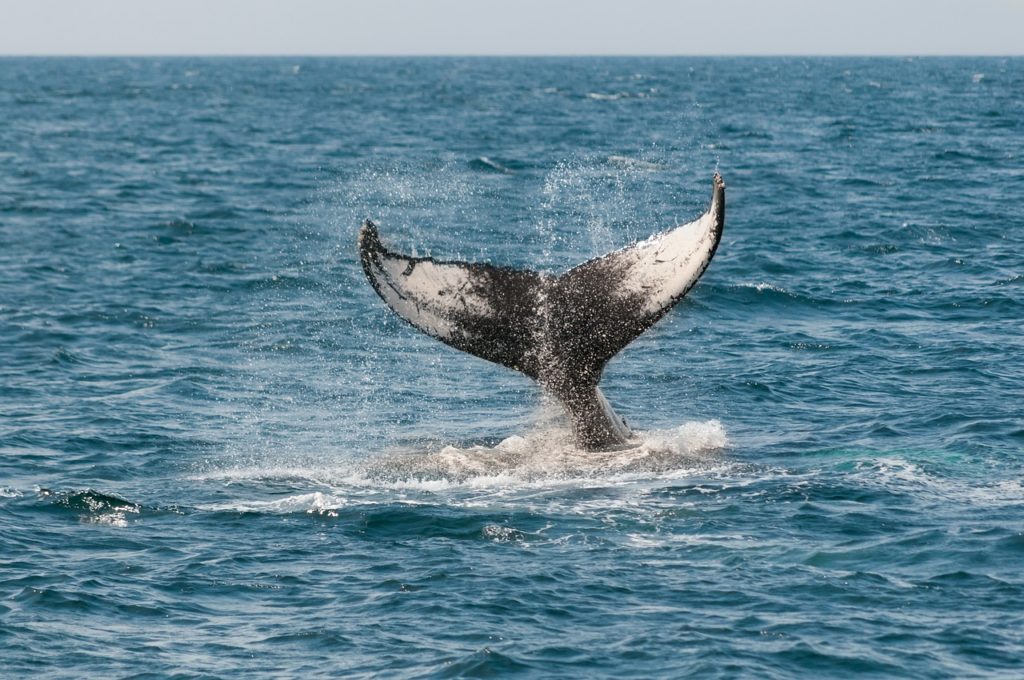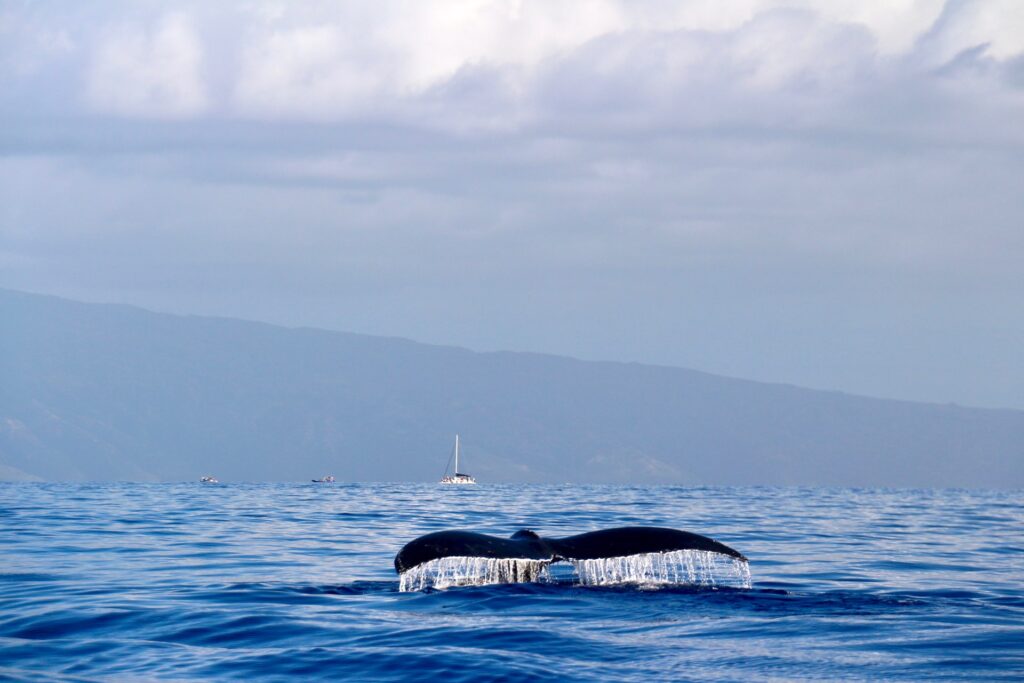The poop loop
Why Whales can help save the planet – Great Whales are carbon-capturing superheroes.
They naturally absorb carbon and they’re crucial to an ecosystem that can help the world fight against climate change called The Poop Loop.

STEP ONE – Whales poop
STEP TWO – Their iron-enriched poop helps create phytoplankton through photosynthesis
STEP THREE – Phytoplankton feeds krill
STEP FOUR – Whales feed on the krill
This incredible marine cycle (The Poop Loop) creates the air we breathe – how cool is that?
The carbon capture potential of whales is outstanding. Whales absorb carbon in their bodies and when they die they take that carbon out of the atmosphere for centuries. They do this by sinking to the bottom of the ocean; sequestering 33 tons of CO2 on average per whale. To put that into perspective a tree absorbs up to 48 pounds of CO2 a year. The International Monetary Fund, 2020 concluded that “When it comes to saving the planet, one whale is worth thousands of trees”
But it gets cooler…
Phytoplankton removes carbon from the air and produces our precious oxygen in return through photosynthesis. A staggering 2/3rds of the world’s oxygen gets produced by our oceans plants interacting with the sun. However, for this cycle to occur, a key ingredient is required, and that’s iron.
We can thank our gentle giants for iron-rich poop which phytoplankton and ocean plants need to photosynthesise. They do this by feeding on iron-rich Krill. Post feed, a whale releases their iron-rich poop near the surface of the ocean. This process creates a nutrients pump which boosts photosynthesis in phytoplankton.
The process currently contributes to a staggering 50% of the oxygen we breathe.



Phytoplankton take carbon to build their shells and when they die or get eaten, they sink to the bottom of the ocean removing the carbon from the food chain in huge quantities. To put it frankly- Whales pooping can help counter climate change!
Whales have lived and pooped in our oceans for more than 50 million years but in the 20th century, we nearly hunted whales until the brink of extinction. Although commercial whaling isn’t entirely illegal in all countries (we’re looking at you Norway, Iceland and Japan) conservation efforts from charities like HWDT have helped many species worldwide flourish again. If the oceans were to return to their pre-whaling number of 4-5 million from our 1.3 million today, it could add a significant amount of phytoplankton into the oceans and therefore increase the amount of carbon they capture each year. Even a percentage as small as 1% could capture hundreds of millions of tons of additional co2 a year – the equivalent of 2 billion trees appearing from nowhere! Despite reducing commercial whaling, whales still face many hazards from entanglement, pollution, global warming, and plastic waste. While some species of whales are recovering, many are not.
We need to protect Whales and that is why Travelling Whale supports HWDT’s work, by donating 1% of our profits to this fantastic charity as our contribution to the collective quest of protecting our planet and is committed to the United Nation’s Sustainable Development Goal 14 ‘Life Below Water’.
